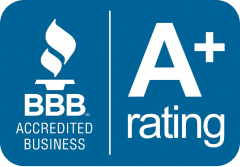
You may want to get one plan that meets all your health needs, Medicare Advantage plans (Medicare Part C) may be the answer.
Medicare Advantage plans in my area: A Medicare Advantage plan combines Medicare Part A (hospital stays) and Medicare Part B (doctor visits)—also known as Original Medicare—in one plan. Most plans include prescription drug coverage (Medicare Part D).
Something else you should know about Medicare Advantage plans: they often include insurance benefits beyond Original Medicare. Some plans may offer routine hearing, vision, fitness, and dental coverage which is not provided by Original Medicare. Certain insurance plans may even cover fitness programs, such as SilverSneakers.
A Medicare Part C plan also puts a limit on your out-of-pocket spending for covered health care. This means once you reach a certain amount of medical care in one year, the plan may cover all Medicare-approved medical expenses for the rest of that year.
Original Medicare doesn’t have such a limit. The limit varies and changes from year to year. Check your plan to know what and how much this limit is.
Do you know that most Medicare Advantage plans (Medicare Part C) are available in almost every state, and let you get your Original Medicare benefits through a private, Medicare-approved insurance company instead of directly from the government?
With Abbysconsulting, a licensed health insurance agency, the Medicare plans you will get more care for less, more of the extras you need, more peace of mind.
Want more for your Medicare dollar?
You’ll get it from USA’s #1 Medicare Advantage plan provider.
Find Medicare Plans in 3 Easy Steps
We can help find the right Medicare plans for you today
What is the difference between Medicare and Medicare Part C?

Original Medicare plans have Part A (hospital insurance) and Part B (medical insurance), and in case you want to get insurance drug coverage, you have to get Part D as well. You can purchase Medicare Supplemental Insurance (Medigap) to help pay out-of-pocket costs, and you can use any healthcare provider in the U.S. that accepts Medicare.
Medicare Part C is a bundled plan that includes the same coverage as Medicare Part A, Part B, and often Part D. Out-of-pocket costs may be lower, and plans usually offer extra Medicare benefits like vision coverage and dental coverage. With a Medicare Part C plan, you’ll be limited to healthcare providers within the plan’s network, and you’ll generally need prior authorization before seeing any specialists.
How to compare Medicare Advantage plans

Because Medicare Part C plans are only available in Medicare-approved private insurance companies, the costs and benefits may vary by plan, please note that not every plan is available in all locations. there are many factors to take into your consideration when comparing plan options:
– Is the yearly deductible value something you are comfortable with?
– Does the monthly premium is a good amount? Some of the plans may have premiums of $0, but don’t forget that you’ll still need to continue paying your Medicare Part B premium, along with any copayments, coinsurance, or deductibles that your plan requires.
– Does the insurance plan include additional Medicare benefits, such as dental or routine vision, hearing, or health wellness programs?
– What are the initial Medicare coverage and out-of-pocket limits? Unlike Original Medicare, every Medicare Part C plan has an annual maximum spending cap; once you reach this limit (which includes the deductible), the Medicare Advantage plan covers 100% of covered medical costs for the rest of this year.
– Does the plan include prescription drug coverage (Medicare Part D)? Are your current medications included in the plan’s formulary or list of prescription drug coverage? What are the copayment and coinsurance costs for the Prescription drugs you take? (Please notice that the formulary is eligible for changing and you’ll be notified by your Medicare plan if necessary.)
– Does the plan have a network? If so, are your healthcare providers and current doctors included? (Please notice that pharmacy networks and providers might change at any time; you’ll be notified by your Medicare plan if necessary)
– What is the plan’s review star rating? Review Star ratings are one way to estimate a Medicare Advantage plan’s performance. Each plan is given a rating between 1 to 5 stars, and 5 stars are the highest quality score.
* Medicare.gov evaluates the insurance plans based on a 5-Star rating system, they have. Star ratings are calculated each year on that system and may change from year to year.
Every person is different and has his own situation, so you’ll want to take care when you choose a plan considering your specific health needs and budget. Don’t forget that plan benefits, costs, service areas, and provider networks may all change from year to year, so it’s very important to review your medicare advantage plan coverage every year and make sure it’s still a perfect fit for your situation. Take your time when shopping around and contact us to compare your Medicare Advantage plan options in your area which will save you time and money on out-of-pocket costs.
If you’re ready to start browsing plan options, Calling Abby’s consulting at (973) 590-2695 will be very useful.
You can find Medicare advantage plan options based on your location, premium cost, insurance company, and more. Contacting us is a convenient way for you to compare plan details to ensure that the most important aspects of your health care needs are fully covered.
Please give us a call to speak with a licensed insurance agent support at (973) 590-2695.
What Medicare Advantage plans are available?
There are five types of Medicare Advantage plan types:
HMO plans or Health maintenance organization: These plans Require you to only see an in-network provider unless You have an emergency situation, and most of the plans require a referral to see a specialist.
PPO, or Preferred provider organization, plans: Allow you to find both in-network and out-of-network covered health care providers, however, it’s usually more expensive to go out of network. PPOs generally have a network in a local area and may expand to a wider region.
PFFS or Private fee-for-service plans: These Plans allow you to visit any Medicare-approved health care provider so long as they agree to the insurance plan’s payment terms and agree to see you. You might also have access to a network of providers. You can see your doctors who don’t accept the plan’s payment terms, however, you might be charged more.
MSA plans or Medical savings account plans: these plans associate a high-deductible insurance plan with a medical savings account which can be used for health care costs.
SNPs, or Special needs plans: Created to improve the management of care for Medicare beneficiaries who are either dually eligible for Medicaid Services and Medicare, require an institutional level of care, or have certain chronic or disabling conditions, such as dementia, diabetes, or decent chronic heart failure.
Medicare Advantage providers
Get more details below about some of the major Medicare Advantage providers. The below insurers offer you plans in most states. Please notice that the plans you can get from will depend on your ZIP code and county.
What should you consider?
While you may don't like Medicare Advantage options if you live in the countryside, urban dwellers could have a lot of choices available. You can narrow the field with these strategies:
Find the star rating. Medicare collects data based on a star rating system, the plans themselves, and health care providers then assign a star rating based on its findings. “The rating is based on performance on a range of many things to do with quality, including things such as, ‘How responsive is the plans to complaints or questions?’” says Demikel Shankle, CEO of Abbys Consulting. The star rating goes from 1 to 5 stars, and the 5 stars are excellent ratings.
Check the numbers. The two primary costs you should consider are the maximum out-of-pocket cost, which is the most you’ll pay in a year for covered health care and a plan’s premium. Max out-of-pocket costs are typically between $3,000 and $7,550, whereas plans with lower out-of-pocket maximums have higher premiums.
Consider your meds. The plan comparison tool on the Medicare website and some private insurance companies that have free compare plan tools allow you to insert your regular prescriptions to help you determine plan prescription drug coverage(Part D) and cost.
Cross-reference your health care providers. If you have a regular network of caregivers and medical facilities, you’ll probably need an insurance plan that includes all of them. It’s totally down to you to find out if the specialists, doctors, and facilities take the exact Medicare Advantage plan you are considering.
Think about your preferences. If you visit specialists a lot and you don’t want to request a referral for every visit to their office, a PPO plan will be a much better option rather than an HMO plan. If you are a light health care user and visit mostly your primary care physician, an HMO plan may be more affordable.
Visit the plan’s website. Before you decide to choose a plan, call us and make sure you understand all the benefits — and limitations. “What we see is that plans are offering these new and different benefits, like in-home palliative care,” Shankle says. Those are very exciting and, if you have a need, they’re something to put into your consideration, however, these new benefits are often limited, so you need to check the plan directly.
Call Abbeys Consulting. If you’re going to enroll or switch to a different plan, call us directly to make sure all details match what you see online.
When can you sign up?
You can enroll in a Medicare Advantage plan (or switch from one to another) during the following periods:
- During your initial enrollment period.
- Each year during the open enrollment period from Oct. 15 to Dec. 7.
- From Jan. the 1st to March the 31st, during Medicare Advantage open enrollment, you can switch from one Medicare Advantage plan to another Medicare Advantage plan (but you can’t enroll in this plan if you aren’t already in one).
If you’re switching plans, once your new one gets started, you’ll be unenrolled from your old plan automatically.
If you have any questions about the signup process, you can reach Medicare at 800-MEDICARE (800-633-4227), or visit Medicare.gov for more information.
Find Medicare Plans in 3 Easy Steps
We can help find the right Medicare plans for you today
The parts of Medicare

Read more to know more about the different Medicare parts and what they cover.
Medicare Part A (hospital insurance).
Medicare Part B (medical insurance).
Medicare Part C (Medicare Advantage).
Medicare Part D (prescription drug plan).
Medicare Supplement Insurance (Medigap).
FAQs
What is the best way to compare Medicare Advantage plans?
Answer: Abbysconsulting.net’s Plan Finder tool is the greatest way to compare all of the Medicare Advantage plans available in your area. These plans provide an option to signing up for standard Medicare, Medigap insurance, and a Part D prescription-drug policy because they include medical and medication coverage from a commercial insurer.
Who can help me choose a Medicare Advantage plan?
Obtain Additional Assistance
Abbys Consulting may assist you in selecting a Part D or Medicare Advantage plan. Call +1 (973) 590-2695 for more information.
Why is Medicare Advantage being pushed so hard?
Because of how they are sponsored, advantage programs are heavily advertised. Because Medicare compensates the carrier whenever someone enrolls, the premiums for these plans are cheap or nonexistent. Because of the money, they receive from Medicare, insurance firms benefit from encouraging membership in Advantage plans.
Who is the largest Medicare Advantage provider?
UnitedHealthcare
UnitedHealthcare is the largest Medicare Advantage plan provider in the United States, with plans available in roughly three-quarters of the country’s counties.
There are two forms of Medicare coverage: Medicare Advantage and Medicare Supplement. It is impossible to have both at the same time. Part A and B are frequently combined with Part D and other forms of coverage in Medicare Advantage plans. If you have Original Medicare Parts A and B, you can get Medicare Supplement insurance.
Is Medicare Advantage more expensive than Medicare?
The average total premium for Medicare Advantage (including prescription coverage and Part B) is clearly lower than the average total premium for Original Medicare, Medigap, and Part D.
How can Medicare Advantage plans charge no premium?
Private insurance businesses offer Medicare Advantage programs. These corporations exist to generate a profit. They must cover their expenditures in other ways in order to provide $0 premium programs. Deductibles, copays, and coinsurance are used to do this.
Does a Medicare Advantage plan replace Medicare?
Original Medicare is not replaced by Medicare Advantage. Rather, Medicare Advantage is a supplement to traditional Medicare. There are certain distinctions between these two options that may make one of them a better fit for you.
Can you have Medicare and Medicare Advantage at the same time?
You’ll still have Medicare if you join a Medicare Advantage Plan, but you’ll obtain most of your Part A and Part B coverage from your Medicare Advantage Plan rather than Original Medicare. To obtain Medicare-covered treatments, you must use the card provided by your Medicare Advantage Plan.
Are you automatically enrolled in Medicare if you are on Social Security?
Yes. If you are receiving benefits, the Social Security Administration will automatically enroll you in Medicare Parts A and B at the age of 65 if you are eligible. (The government Centers for Medicare & Medicaid Services runs Medicare, but Social Security manages enrollment.)







